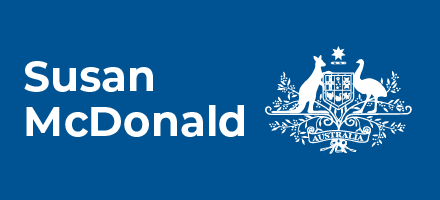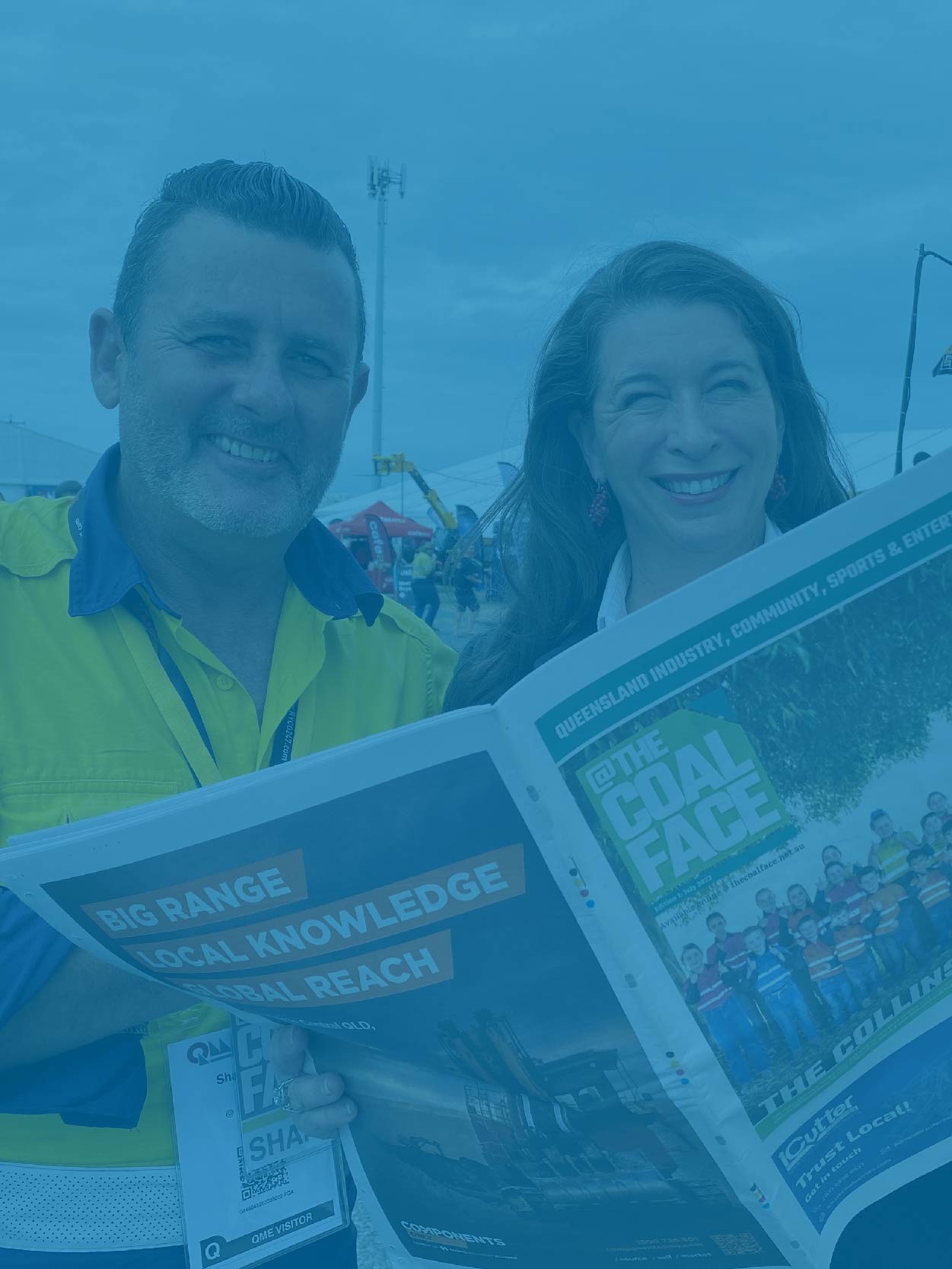The Coalition’s Record in Government
The Coalition Government led Australia through unprecedented challenges, making our country safer and stronger.
STRONGER ECONOMY
The December 2021 National Accounts showed Australia’s economy grew 3.4% since the pandemic – more than the USA, UK, Canada, Germany, Japan, Italy and France.
Australia was ahead of the major advanced economies in having more people in employment than pre-COVID.
MORE JOBS
In April 2022, unemployment fell to 3.9%, the lowest level in 48 years.
This was considerably lower than the 5.7% unemployment rate left by Labor in 2013.
Australia’s recovery defied predictions, including that of Treasury, which predicted unemployment could reach 15%.
LESS WELFARE DEPENDENCY
The rate of welfare dependency fell to the lowest level in 30 years – from 16.5% under Labor (in June 2013) to 13.5% in June 2019.
Even after the COVID recession (at June 2021), welfare dependency was 15.6% – lower than under Labor.
STRONG BUDGET
The 2022 Budget saw the largest improvement in Australia’s finances in over 70 years.
The Budget was projected to be over $103 billion better off over five years, compared to the previous mid-year projections.
Australia has remained one of nine countries to hold a AAA credit rating from the three leading credit agencies.
Australia entered the COVID-19 pandemic in a position of strength. In 2018-19 the Budget returned to balance for the first time in 11 years.
COVID RESPONSE AND RECOVERY
On almost any measure – economic growth, jobs growth, debt levels, fatality rates and vaccine rates – Australia’s recovery from COVID-19 was world leading.
Australia had one of the lowest fatality rates from COVID-19 in the world, with death rates in the USA and the UK around 10 times higher.
By avoiding these outcomes, Australia’s response saved around 40,000 lives.
In 2021, Australia ranked 2nd in the world for pandemic and epidemic preparedness, in the John Hopkins University Global Health Security Index.
As Bill Gates said in February 2022: “If every country does what Australia did, then you wouldn’t be calling [the next outbreak] a pandemic.”
JOBKEEPER AND OTHER SUPPORT
Australia’s strong economy gave us the financial firepower for measures like: JobKeeper (supporting around 4 million jobs and over 1 million businesses); the Cash Flow Boost (supporting over 800,000 businesses); and 50% wage subsidies for apprentices.
Treasury estimates the Coalition’s economic support measures saved around 700,000 jobs.
LOWER TAXES FOR WORKERS
The Coalition Government rewarded hard work by reducing taxes for more than 11 million Australians.
In 2021-22, a person earning $90,000 was paying over $3,000 less tax ($18,217, compared to $21,247 in 2013-14).
When the third stage of our legislated tax plan comes into effect in 2024, 95% of taxpayers will face a marginal rate of no more than 30 cents in the dollar.
LOWER TAXES FOR SMALL BUSINESSES
The tax rate for small businesses was reduced from 30% to 25%, the lowest rate in 50 years.
Hundreds of thousands of businesses have written off the full value of eligible assets (from new utes and harvesters, to manufacturing equipment) through the Instant Asset Write Off.
LESS RED TAPE
MORE APPRENTICES
By April 2022, 220,000 Australians were in a trade apprenticeship – the highest level since records began in 1963.
MORE EXPORTS
In 2020-21 Australia had its largest ever trade surplus of $89 billion.
Since 2013, Australian exporters gained duty-free or preferential access to 2 billion more customers. This included agreements with Japan, Korea, China, Hong Kong, Indonesia and Peru, plus the 11 nations of the Trans-Pacific Partnership, the Pacific Agreement on Closer Economic Relations and the Regional Comprehensive Economic Partnership.
New agreements were being implemented with the United Kingdom and India. These will deliver preferential access to another 1.4 billion customers.
MORE AFFORDABLE ENERGY
During six years of the last Labor Government, power prices doubled.
While average annual electricity price increases were 12.9% under the previous Labor Government, they were just 0.3% under the Coalition.
A number of measures helped reduce pressure on prices, including: a price safety net to protect customers; “big stick” legislation to stop energy company rip offs; and measures to deliver reliable, secure and affordable energy, from a variety of sources.
RECORD INFRASTRUCTURE INVESTMENT
The Coalition Government delivered over 10,400km of road.
Nation building projects like the Melbourne to Brisbane Inland Rail, the new Western Sydney International Airport, and Snowy 2.0 were well underway.
The Coalition invested in better public transport including: Brisbane Metro, Gold Coast Light Rail and North Coast Rail in Queensland; Sydney Metro - Western Sydney Airport in NSW; Melbourne Airport Rail Link in Victoria; Flinders Link in SA; METRONET in Perth; and Canberra Light Rail.
The Coalition also invested in faster rail projects – from Melbourne to Geelong, Brisbane to the Sunshine Coast and Gold Coast and Sydney to Newcastle.
INVESTING IN REGIONS
The Coalition Government has invested more than $120 billion to develop Australia's regions. This helped ensure they get the critical transport, industries, skills, water and communications infrastructure they need.
WATER SECURITY
$8.9 billion was committed for dams, weirs and pipelines through the National Water Grid Fund.
The Coalition Government also committed to 74 water infrastructure projects including the Hell’s Gates Dam – to turn the Burdekin region into an agricultural powerhouse.
FIXING MOBILE BLACK SPOTS
The last Labor Government didn’t fix a single black spot or deliver a single tower. The Coalition Government funded more than 1,300 mobile base stations across Australia.
SOVEREIGN MANUFACTURING
The Coalition Government’s $2.5 billion Modern Manufacturing Strategy had enabled over 200 projects to help grow capabilities in six priority areas: defence; space; medical products; resources technology and critical minerals processing; recycling and clean energy; and food and beverages.
An agreement was finalised to make Victoria the first place in the southern hemisphere to manufacture mRNA vaccines.
TACKLING UNION LAWLESSNESS
The Australian Building and Construction Commission was re-established, protecting 1.1 million workers and 380,000 small businesses from CFMMEU thuggery.
This reduced the days lost to industrial action in the construction industry (by over 50% prior to the pandemic, and more so since).
Corrupting payments between employers and unions have been banned. Legislation was passed allowing amalgamated unions that are dissatisfied to demerge.
Around 35,000 owner-operator truck drivers were saved from a hostile union takeover.
DELIVERING THE NBN
After six years of Labor, just 51,000 users were connected to the NBN, with Labor paying $6 billion for the NBN to pass just 3% of Australian premises.
The NBN is now available to over 12 million homes and businesses – or more than 99% of Australian premises. It has over 8.4 million active connections.
FUNDING THE NDIS
The NDIS was funded and implemented to support over 500,000 participants.
RECORD HEALTH INVESTMENT
Federal funding for public hospitals doubled – from $13.3 billion under Labor (in 2012-13) to $27.2 billion (in 2022-23).
STRONGER MEDICARE
The Medicare GP bulk billing rate last year (12 months to June 2021) was 88.8%, up from 82.2% in Labor’s last year (2012-13).
More than 152.2 million bulk billed GP services were delivered in 2020-21 – 46.4 million more than Labor’s last year (2012-13).
CHEAPER MEDICINES
2,900 new or amended medicine listings were added to the Pharmaceutical Benefits Scheme, to help people suffering from cancer, heart disease, epilepsy, multiple sclerosis, osteoporosis chronic migraines and many other conditions.
DELIVERING TELEHEALTH
The Coalition Government made Medicare subsidised telehealth services permanent, enabling over 100 million Telehealth consultations since COVID.
IMPROVING PRIVATE HEALTH
Private health insurance was made simpler and more affordable, resulting in the lowest premium changes in 21 years (2.7% in 2022).
BETTER IMMUNISATION RATES
The immunisation rate for five year old children is over 95% – the highest on record.
Children 5 years and older now have access to a free COVID-19 vaccine.
All 12 and 13 year olds now have free access to the Gardasil 9 Vaccine, to protect them from the HPV virus.
The Coalition Government also provided the whooping cough vaccine to pregnant women.
BETTER MENTAL HEALTH
The Coalition Government nearly doubled mental health funding since 2013 and doubled the number of Medicare subsidised psychological services from 10 to 20 per year.
Over 106,000 young Australians were supported by headspace services in 2020-21.
MORE AFFORDABLE CHILD CARE
With the Coalition Government, 280,000 more children were in childcare, with $11 billion in support for families in 2022-23 (up from $6.2 billion in 2013-14).
The child care system is targeted, with those who work, train or study the most getting the most support. Those earning the least received the highest level of subsidy.
Approximately 90% of families using approved child care are eligible for a Child Care Subsidy of between 50% and 85%.
BETTER AGED CARE
The number of home care packages increased from around 60,000 under Labor, to 233,000 (with 275,000 available by 2023).
The Coalition had committed to a five-year $19.1 billion plan to improve aged care, with new home care packages, respite services, training places, retention bonuses and infrastructure upgrades.
SUPPORTING SENIORS
Since 2013, pensions increased by $179.20 per fortnight for singles and $270 per fortnight for couples.
During the pandemic, $750 payments were provided in April and July 2020 with further $250 payments in December 2020 and March 2021. A $250 cost of living payment was also provided in the 2022 Budget for 6 million Australians, including pensioners.
Older Australians have also been supported by a reduction in deeming rates (which are used to help calculate income from assets and eligibility for pensions).
SUPPORTING WOMEN
Since 2013, around 60% of the 1.9 million jobs created have gone to women.
Female workforce participation is around record highs at 62.2% (compared to 58.7% when we came into government).
The gender pay gap was reduced from 17.4% under Labor to 13.8%.
The number of female business operators increased from 647,000 in 2013 to 815,600 (at August 2021).
Over $3.5 billion has been invested in women’s safety since 2013, focusing on prevention, early intervention, response and recovery.
RECORD DEFENCE INVESTMENT
In 2020, the Coalition Government restored defence investment to 2% of GDP. This reversed the decline under Labor, when defence funding fell to 1.56% of GDP – the lowest level since 1938.
With the Coalition, over 70 defence vessels and 1,300 defence vehicles were being built or upgraded in Australia, supporting over 100,000 defence industry jobs and 15,000 business.
AUKUS ALLIANCE
Australia has entered into an enhanced security partnership with the United Kingdom and the United States – AUKUS.
This will support Australia’s acquisition of at least eight nuclear-powered submarines and enhance our joint capabilities, including cyber security, artificial intelligence, quantum technologies and additional undersea capabilities.
DEPORTING CRIMINALS
Between January 2014 and March 2022, the Government cancelled or refused the visas of over 10,400 dangerous criminals.
This includes at least 219 for murder, 485 for rape or sexual assault, 807 for child sex offenders, 512 for armed robbery and 1,756 for drug offences.
FIGHTING TERROR
Since September 2014, Australia’s law enforcement agencies have disrupted 21 major terrorist attack plots.
TACKLING CRIME
The Coalition worked to stop drugs at their source.
Between 1 January 2019 and 31 December 2021, the AFP stopped over 49 tonnes of illegal drugs from reaching Australian streets (including five tonnes of methamphetamine, over five tonnes of cocaine, and nearly one tonne of heroin).
Between December 2014 and February 2022, 1,756 people had their visas cancelled or refused for drug offences.
While Labor used money in the Confiscated Assets Account to boost its Budget, the Coalition Government used the proceeds of crime for crime prevention and law enforcement measures.
SECURE BORDERS
Under Labor, over 50,000 people arrived on over 800 illegal boats. The cost of Labor losing control of our borders was $17 billion and counting.
Stopping the boatsenabled the Coalition to close 19 detention centres and remove all children from detention.
PROTECTION FROM FOREIGN INTERFERENCE
We introduced legislation strengthening Australia’s capacity to defend against foreign interference.
Australia’s Foreign Relations Bill also gives the Australian Government the power to veto agreements with foreign countries, including the Belt and Road initiative.
CYBER SECURITY
The Morrison Government’s $1.7 billion cyber-security plan represents our largest ever commitment to keeping Australians safe and secure online.
ONLINE SAFETY
In 2015, the Coalition established the world’s first eSafety Commissioner, which has helped with around: 4,000 complaints about serious cyber-bullying of children and young people; 9,000 instances of image-based abuse; and over 70,000 items of illegal and restricted content, including child sexual abuse material.
The Coalition’s Online Safety Act further strengthened protections against cyber bullying, imposed tough new penalties on social media companies and perpetrators, and enacted the world’s first scheme to take-down serious cyber-abuse of adults.
REDUCED EMISSIONS
Our emissions are already 20% lower than in 2005 (the baseline for the Paris Agreement). That’s lower than any year under the last Labor government.
Between 2005-2019, Australia has reduced our emissions more quickly than Canada, Japan, New Zealand and the United States.
Australia is on track to meet and beat our 2030 Paris target, with latest projections showing a 30-35% reduction.
We are on track to reach net zero emissions by 2050.
INVESTMENT IN RENEWABLES
Australia has the world’s highest uptake of rooftop solar, with one in four homes having rooftop solar panels.
In 2020, Australia deployed more renewable energy than in the six years of the previous Labor government.
The Coalition Government invested in projects like Snowy 2.0 (one of the largest pumped hydro projects in the southern hemisphere) and Tasmania’s Battery of the Nation.
BETTER RECYCLING
The Coalition banned the export of glass, unprocessed wasted plastic and tyres and funded projects that will increase Australia’s domestic recycling capacity by over 1.3 million tonnes.
PROTECTING THE REEF
In 2015, the Coalition banned dredging in the Reef Park.
Over $3 billion was invested in the Reef 2050 Sustainability Plan, to improve water quality, fight crown of thorns starfish and conduct research into restoration and adaptation.
SUPPORTING HOME OWNERSHIP
Since 2019, the Morrison Government has supported more than 300,000 Australians to buy a home, including initiatives like HomeBuilder, the First Home Super Saver Scheme and the Home Guarantee Scheme.
CLOSING THE GAP
$1 billion was invested in Closing the Gap measures including early childhood, health, education and support for families.
93% of Indigenous children are now enrolled in preschool (up from 77% in 2016).
28,000 Commonwealth contracts have been awarded to Indigenous businesses since 2019.
1,328 major transport projects supporting 120,000 jobs.




